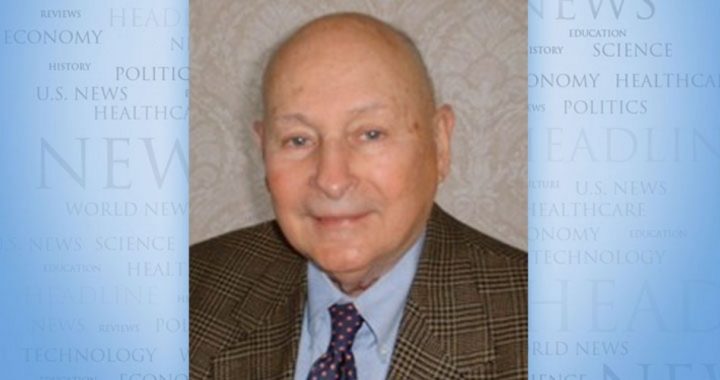
The teacher strike in Chicago is more than just about salaries, benefits, and collective bargaining.It is more about the struggle between the visions of two liberal personalities than anything else: Karen Lewis, President of the Chicago Teachers Union and Rahm Emanuel, the Mayor of Chicago. The issues are indicative of the split among Democrats between those who want to strengthen the public schools and those who want to go in the Charter School direction in line with Democrats for Education Reform.
If you want to see Karen Lewis in action, there is a 35-minute video of this formidable union president speaking at a Conference for Social Justice. Pacing the stage like a stand-up comedian, she admits that she is fat and has to lose weight. She said:
I am the only black woman in the class of 1974 from Dartmouth College. Woo. People are impressed. Let me tell you, I spent those years smoking lots of weed, self-medicating. Self-medicating, thank you. Sounds like you all did it too. Oh, I’m sorry there are kids here. I wasn’t supposed to say that, right? Too late!
She is highly intelligent, strongly motivated, and determined to fight the trend away from public schools.She has called Rahm Emanuel a bully and a liar. She asked him why he wanted to add 90 minutes to the school day. Her answer: it had nothing to do with education. It was to keep the 350,000 school kids off the streets an hour and a half longer. Chicago is having a severe problem with gang violence, and keeping the kids in school longer is expected to help alleviate the problem.
Lewis, 59, a former chemistry teacher who attended Chicago public schools and is a daughter of teachers, was elected union president in 2010. She is now being praised by the 26,000 striking teachers as a fearless defender of a profession under siege. She is particularly angry at Arne Duncan, former head of Chicago’s public schools who is now Obama’s Secretary of Education. She’s critical of his support of non-union charter schools. She said at the Conference for Social Justice:
“Now, you know he [Duncan] went to private school ’cause if he had gone to public school he would have had that lisp fixed. I know, that was ugly, wasn’t it? I’m sorry.”
Indeed, Duncan did attend the University of Chicago’s famous Lab School, where John Dewey, back in 1902, had conducted his experiments in creating a new socialist-collectivist curriculum for the public schools. Michele and Barack Obama sent their two daughters to that school while living in Chicago, and Rahm Emanuel has also placed his kids in that famous school. Whether or not they know anything about the history of that school is not as important as simply knowing that John Dewey, the god of progressive education, started it.
However, what gives Karen Lewis her power among teachers is her devotion to the teaching profession. They have overwhelming confidence in her, and when she says “strike,” they strike.
Meanwhile, more than 100 schools have been staffed by nonunion workers as alternative care for children that would expand their hours as of Thursday. A union representing 1,500 school janitors served notice that on Friday some of them may join the teachers and no longer cross the picket lines.
Around Chicago, the standoff between Rahm Emanuel and Karen Lewis has become the subject of heated and amusing discussion, with some suggesting that the sheer size of the two conflicting personalities has exacerbated the deep divide over such issues as teacher evaluations, the rehiring of laid-off teachers to new jobs, a longer school day, and increases in teacher pay. There is wide dispute over who is more at fault, and no one really knows which one is likely to back down.
Meanwhile, Lewis has the support of Randi Weingarten, president of the American Federation of Teachers, who attended a downtown rally of teachers and union supporters. Lewis said she didn’t think that the two sides were anywhere near to resolving their differences immediately. Of the 49 articles in the contract, she said, the union had only signed off on 6, which leaves 43 still in dispute.
According to the Washington Times, 79 percent of the 8th graders in the Chicago Public Schools are not grade-level proficient in reading, according to the U.S. Department of Education, and 80 percent are not grade-level proficient in math. About 60 percent of students in Chicago public schools complete high school, according to the Illinois Policy Institute, a nonpartisan think tank. That is why a new system is being planned for evaluating public school teachers on the basis of their students’ improvement on standardized tests, which will count for 40 percent of a teacher’s evaluation. At present, evaluations of Chicago public school teachers have been based on what a Chicago Sun Times editorial called a “meaningless checklist.”
In other words, teacher performance has become a major issue in union disputes with school boards. According to NBC News:
The battle in Chicago over using student test scores to judge teachers is just one front in a nationwide battle over how to make sure teachers are doing a good job, and that taxpayer dollars and student time aren’t going to waste.
“This is going to become a long-term battle that everyone’s watching very closely,” said Eric Hanushek, a senior fellow in education at the Stanford University’s Hoover Institution, a conservative research center. “Teacher unions are at a crossroads: Are they going to participate in designing better teacher evaluations or resist and not change anything? The Chicago union seems to be taking the resist option, drawing their line in the sand.
Twenty-four states now require teacher evaluations based on some measure of student growth, according to an analysis by the National Council on Teacher Quality, a research and policy group. Public school districts in Tennessee and Washington, D.C., recently implemented new teacher evaluations tying outcomes to merit raises, while Colorado and New York are deep in the process of developing an evaluation system, the council noted.
In the past three years, at least 20 state legislatures have passed bills setting up new teacher evaluation processes, according to the council. Illinois joined the ranks last year when its legislature passed a law mandating new teacher evaluations, with Chicago’s leaders rushing to embrace the system, called the Performance Evaluation Review Act.
In Chicago, Lewis has warned that as many as 6,000 teachers could lose their jobs under the new evaluation system, but Emanuel has promised that teachers would not be fired in the first year of the evaluation process. Lewis, however, is still resisting.
“This is no way to measure the effectiveness of an educator,” said the union in a statement. “Further there are too many factors beyond our control which impact how well some students perform on standardized tests such as poverty, exposure to violence, homelessness, hunger and other social issues beyond our control.”
Phillip Greenspun, a retired computer engineer, offers this interesting solution to Chicago’s school problems on his blog. He writes:
As measured by student test scores and adjusted for budget ($13,000 per student), Chicago has some of the world’s least effective schools. The teachers earn an average of $76,000 per year, but with health care, retirement, and other benefits, the true cost is probably closer to $150,000 per year (more than $200,000 per year for a teacher working a standard full-year schedule rather than just for nine months).
It would appear that Chicago has a golden opportunity to shed crushing pension and health care obligations by spinning off and decentralizing its public school system.
Chicago could simply create a non-profit organization for each school, give the administrative jobs within that school to existing administrators (presumably they are not on strike), fund those new non-profit organizations with $13,000 per student, and let the administrators hire whatever teachers they can find (including hiring from among the currently striking teachers) at market-clearing salaries and with a standard-defined contribution retirement plan (rather than the defined benefit plan that has led to the Chicago Public School’s billion-dollar deficit).
That’s basically the same idea I have suggested that would solve the many problems of government owned and operated education. However, I would fund each separate non-profit school by parental tuition payments and other fund-raising techniques. As for educating children whose parents could not afford the tuition, the town could create a Town Fund to pay for the tuitions of poor kids. With real estate taxes no longer being used to fund public schools, the town would have more than enough money to pay for the education of poor kids.
Charter schools are not the long-range answer to the problem. They are still public schools financed by government with very limited capacities for students. They would still be subject to mandates imposed by government. Only true educational freedom will solve America’s education problems. But neither Karen Lewis nor Rahm Emanuel believe in education freedom. They are committed to some form of government education, which is why the issues under contention will never to solved.
In other words, there are ways of solving our education problems by applying market principles to educational services. They work in the private sector very nicely. They cost less for everyone concerned. And certainly, the homeschool movement has shown that parents can be better educators than the professionals in the schools who don’t know how to teach a child to read. And so, educational reforms are being made every day when parents decide to take their children out of the public schools and teach them at home, at no cost to the taxpayer.
The strike in Chicago is simply a symptom of the system’s dysfunctional nature. It provides inferior education at very high prices. The result is that the nation suffers as the schools produce fewer and fewer young adults with the skills needed to compete in the global economy.



